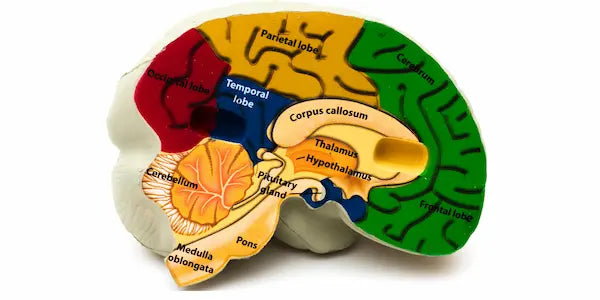It seems that headaches do not occur by chance at certain times of the day or year. Recent studies highlight a link between our biological clock and the appearance of migraines and cluster headaches . Here we summarize this study published in “ Neurology” .
Cluster headaches: a poorly timed problem
According to a meta-analysis and related research, 70.5% of participants with cluster headaches showed a dominant circadian pattern . This means that these headaches mainly occur between 9 p.m. and 3 a.m., with an increase in the spring and fall.
Cluster headache is a type of primary headache characterized by intense, throbbing, unilateral pain (involving only one side of the head), often described as a burning or piercing sensation behind or around the eye. It differs from migraines and other types of headaches in its frequency, duration and associated symptoms.
Migraine: a headache stuck on the clock?
For migraine, the pattern is slightly different. 50.1% of participants with migraines had a clear trough between 11 p.m. and 7 a.m., with a peak from April to October. Which suggests that migraine is also influenced by our circadian rhythm .
The term circadian comes from the Latin "circa", meaning "around" or "approximately", and "diem", meaning "day". It refers to biological processes that take place over a period of approximately 24 hours.
A circadian rhythm is therefore a natural biological cycle which takes place over a period of approximately 24 hours. These rhythms are present in many living things, including animals, plants and even some microorganisms. They regulate many physiological functions.
The hypothalamus: the conductor of the orchestra?
The hypothalamus, the region of our brain responsible for our biological clock, seems to play a major role. Mark Joseph Burish, a researcher at the University of Texas, says this reinforces the importance of the hypothalamus in managing cluster headaches and migraines. In addition, genetic elements linked to the circadian rhythm could be triggers for migraines.

Intriguing biological markers
Studies also show differences in melatonin and cortisol levels in people with cluster headaches. Additionally, circadian genes such as CLOCK and REV-ERBα are associated with these headaches. For migraine, urinary melatonin levels are lower, and genes like CK1δ and RORα appear to play a role.
Towards new therapeutic approaches
Understanding these factors could offer new treatment avenues for patients. Treatments based on circadian rhythm or medications that cause circadian changes could be considered. In addition, taking into account sleep disorders, such as insomnia, could help in the management of headaches.
Conclusion
Although research is still ongoing, current data shows an undeniable link between our biological clock and the occurrence of migraines or cluster headaches. A better understanding of these mechanisms could pave the way for more targeted and effective treatments for people affected by these headaches.







